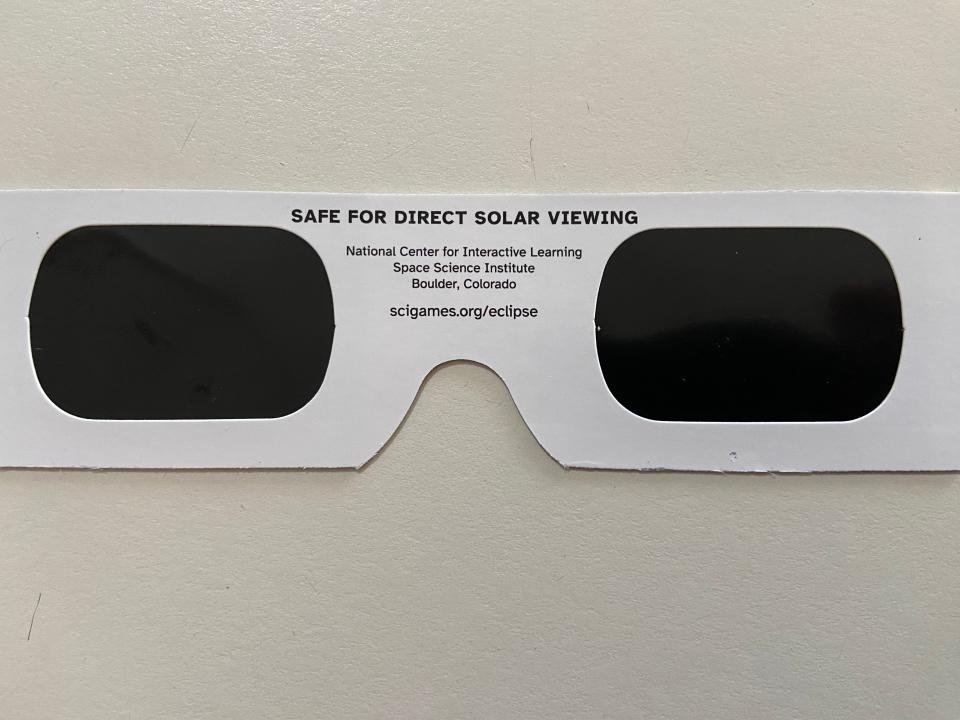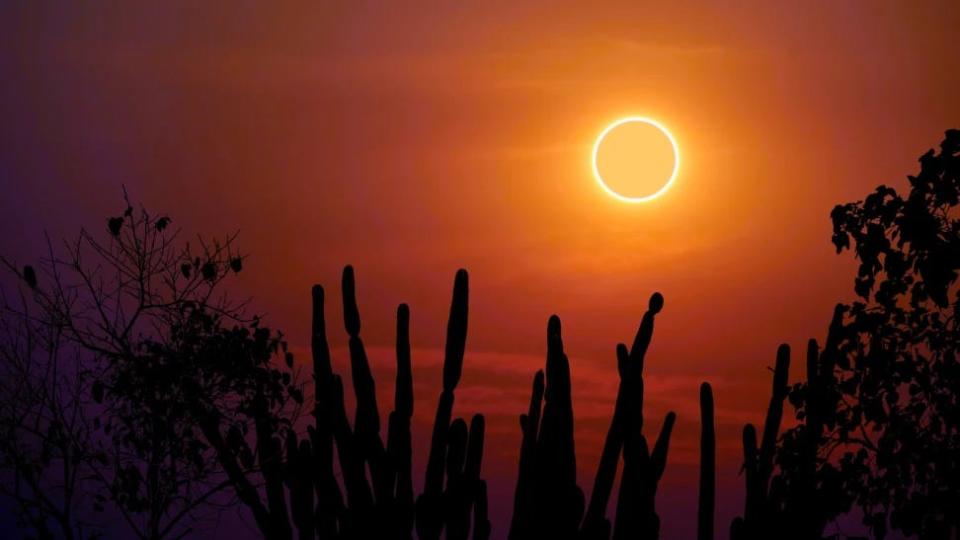Why 2024 total solar eclipse will be magical and how to start preparing for it this Saturday
Wayne Schlingman is the director of the Arne Slettebak Planetarium at Ohio State University. He specializes in radio astronomy, public outreach, and astronomy education.
Those pumped about next year's total solar eclipse will have a test run this weekend.
A partial solar eclipse that will cover 50% of the sun’s area will happen Saturday, Oct. 14.
It will begin at 11:46 a.m. and will be maximum coverage at 1:07 p.m. in Columbus.
If you are traveling to the Southwest and West Coast of the United State, this is a rarer annular eclipse or ring of fire eclipse.

In Ohio, as the moon begins to cover the sun more and more, you will see shadows change under trees change as thousands of pinholes are formed and you see little images of the sun looking like a cookie you took a bite out of.
For partial and annular eclipses, you should never take off your certified eclipse shades as a part of the Sun’s surface is always visible and can hurt your eyes.
Why should you take note of this weekend's eclipse?

Partial eclipses are relatively common phenomena, so why should any of us care?
The main event comes on April 8, 2024. A total solar eclipse will pass through two thirds of the great state of Ohio.
More: 5 things to know about the total solar eclipse in 2024
This will be the last time for almost a century that Ohio will be in the path of totality (where the sun is completely covered by the moon).
This means you can take your glasses off and see the Corona of the sun, its crown of gas streaming away from the surface, and you will see stars and planets in the sky with a sunset in all directions.
Even if it is cloudy, you will see the sky go black in the middle of the day.
Why will the April 8, 2024 total solar eclipse be such a special occasion?

I had someone ask me recently what is so special about the moon passing between the Earth and the sun and blocking it out for a few minutes. It’s actually hard to describe why an eclipse is such a magical experience.
It is incredible to see things you have never seen before but you also get to see a wall of darkness come rushing at you at 1,000 miles per hour.
You see planets and stars in the middle of the day. There is also the weird in between time where it gets cold even though it may be completely sunny. Then it gets weirdly dim and animals start to act weird or go to sleep. It’s just an incredible feeling because the experience is novel and unlike anything else.
How to prepare for the Oct. 14 partial solar eclipse?

If you want to know more about the eclipse in Ohio, go to eclipse.ohio.gov/.
This coming weekend is a great opportunity to practice observing the sun safely. You should NEVER use sunglasses or no protection to look at the sun, you will go blind and damage your eyes.
You want to only use certified eclipse shades and telescopes explicitly made for solar observing from reputable vendors.
While we all have time to get eclipse shades before April, the best way to observe the sun without proper safety equipment is to make a pinhole camera. Take a large sheet of thick paper, cardboard works great, and poke a small hole in it.
This will make geometric optic that will then image the sun on a screen or the ground. This is what is happening when you look under a tree, thousands of pinholes. You can then see the moon move across the surface of the sun and block parts of it and you can share it with family and friends.
Wayne Schlingman is the director of the Arne Slettebak Planetarium at Ohio State University. He specializes in radio astronomy, public outreach, and astronomy education.
This article originally appeared on The Columbus Dispatch: How to watch 2023 ring of fire solar eclipse, prepare for 2024 total eclipse
